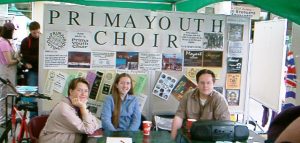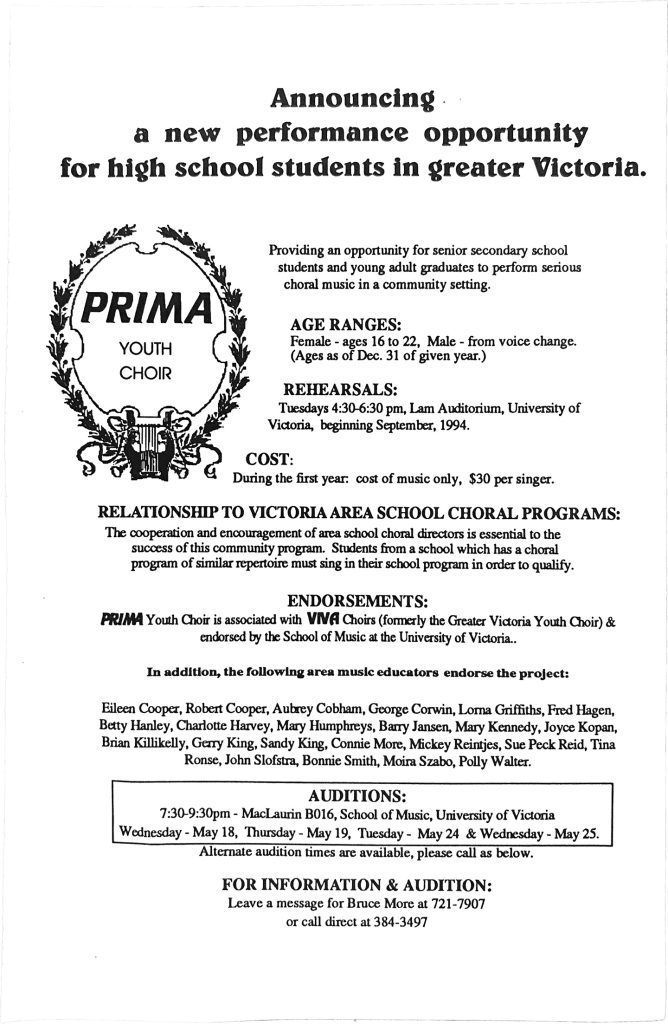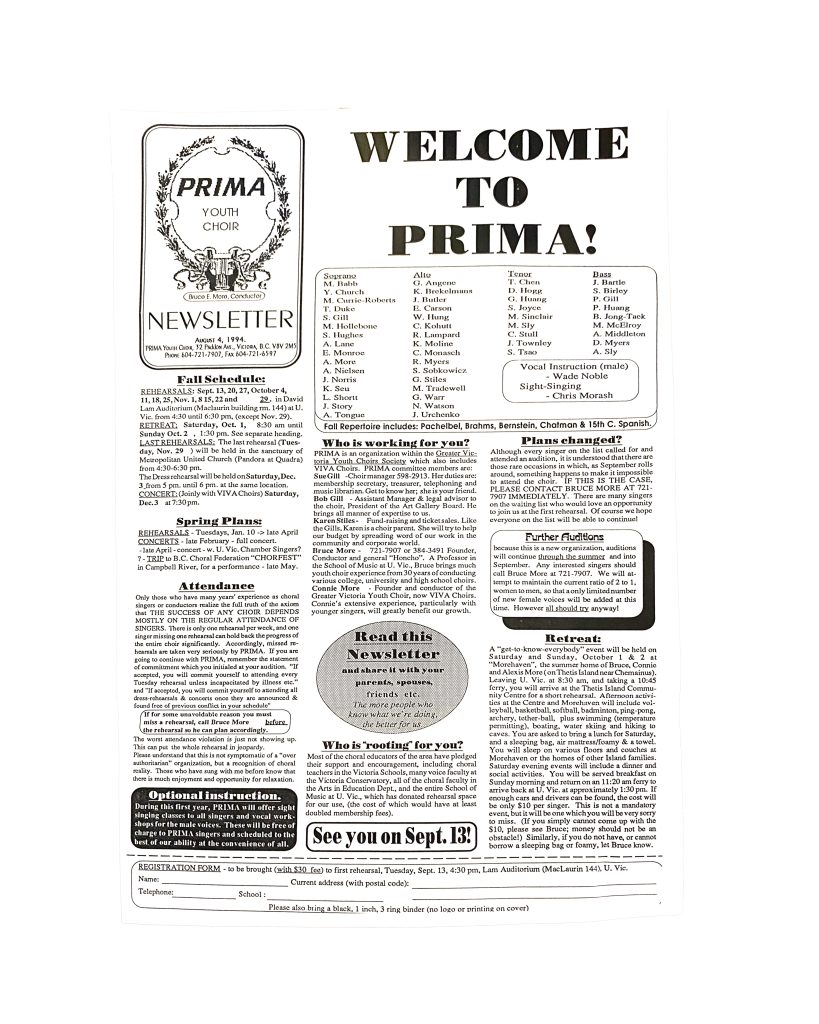In 1994, upon returning from a sabbatical in England and having just retired from 16 wonderful years with the Victoria Choral Society, I began the process of forming a high school / university age choir for Victoria. There were many factors that guided me to this goal:
- There had never been a mixed voice youth choir in Victoria, a city whose aging choral population desperately needed such an organization if choral singing was to continue and grow.
- The University of Victoria which had only two mixed voice choirs, served 150 students singers at best: a dismal one percent of the 1500 student population. Clearly more opportunities for “serious” Choral Singing were needed at UVic.
- My daughter Alexis just graduated from Connie’s Viva choir and I therefore had a conduit to a large cohort of excellent singers from that choir. Alexis also brought in a substantial number of colleagues from her friends at Mt. Douglas Senior Secondary.
- The initial barriers to forming such an organization were predictable:
-
-
-
- The feeling expressed to me by a few adult choral singers that the “boys” would never come out for such a choir and furthermore, those who would were desperately needed in the adult choirs.
- The inability of the School of Music to include such a choir in my teaching load,
- The potential competition with several excellent high school programs. My first priority was to attempt to ease the concerns of local high school teachers, that such a new choir would “raid” existing high school singers, since by definition a mixed voice youth choir must rely on the participation of male changed voices, It was not practically possible to exclude high school age singers from a viable youth choir. Accordingly I had individual meetings with all of these conductors:
-
-
-
-
-
-
-
-
- Eileen Cooper at Oak Bay
- Sandy King at Mount Doug
- Joyce Kopan at Belmont
- Jan Heinrich at Stelly’s
- Mary Humphreys at Saint Michael’s
-
-
-
-
-
At the outset, I assured them that one of the prime requirements of such youth choir members would be that if they attended a high school that had an active school choral programme, they would be required to sing in that programme in order to be allowed to join Prima. That way the advantages would work both ways: Prima would have access to high school age singers, and the high school choirs would have the advantage of extra experience in choral singing.
As for competition with an adult choir, the fact was that almost no young singers under the age of 20 were joining adult choirs, due to the increasing age gap. Hopefully then, a youth choir would, in time, provide a new source for singers for Victoria. I also knew in my heart that the “boys” would come out in droves. In the coming year, about 50 did.
Our initial organizational and financial support (including tax credits for donations) included being part of the new Victoria Youth Choirs Society, which had Board members that dealt with Viva Choirs and with Prima Choir. This it lasted for the first 3 seasons.
As for funding, the School of Music generously donated free rehearsal space and later access to their accounting system. For my own part, I conducted Prima as part of my School of Music faculty outreach until 2000, when Prima was in a position to provide me with a small honorarium. This arrangement worked extremely well for me, since I was able to include the considerable accomplishments of Prima in my Curriculum Vitae over the years. Unfortunately this “arrangement” proved to be the single most potent reason for the downfall of the choir after my retirement. My successor Wade Noble simply didn’t have the same connections as I had in the School of Music, not to mention in the university as a whole, so in spite of the wonderful choirs he produced, membership dwindled until there were very few singers left.


